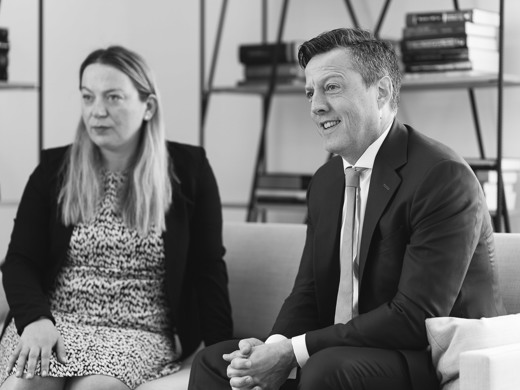5 minutes with… Mick Smith
- International arbitration




Mick Smith is a Principal with responsibility for leading Burford’s investment activity and operations in Europe.
You started your career as a solicitor at Freshfields before moving to investment banking. Given your experience in both law and finance, what advice would you give to companies that may not fully appreciate the financial value of their pending legal claims?
The challenge when discussing the pending value of litigation is that you’re often dealing with people from two different sides of the organization: Legal and finance. Oftentimes, General Counsel don’t have the fullest grasp of financial sensitivities, and vice versa. Therefore, much of the service we provide isn’t just to help clients understand the value of their legal claims but also to understand the perspectives of these two parts of the business.
In practice, legal finance providers can act as a bridge between the legal and finance teams by demonstrating the expected financial value of pending litigation through quantitative analysis. This is useful not just for the finance department, which may be looking for quantifiable details on litigation, but also for the legal department. The GC will no doubt have a comprehensive understanding of the case under consideration from a legal perspective, but they are unlikely to have the depth of commercial dispute data that we have, which is fundamental to the valuation of claims.
Summing up, many companies appear to leave millions of dollars unclaimed due to costs and risk. In order to understand the value of these underappreciated pending legal claims, companies would be well served to open the communication channels between their legal and finance departments and to utilize our services to bridge any gaps.
What is the main benefit of conducting quantitative analysis when making decisions about litigation?
It’s exceedingly difficult to understand the value of legal claims unless you have the numbers. Litigation is expensive, not only because of the initial estimated cost burden, but also because of the dreaded ‘unknown unknowns’ such as court delays and subsequent appeals. Using external tools like legal finance allows companies to manage these risks.
Legal finance providers like Burford regularly conduct sophisticated analysis to generate quantitative data on litigation as a core function of their business. We consider all of the costs and risks involved—from duration and initial obstacles to arbitrator issues and subsequent litigation to close the case (e.g., post-judgment appeals and enforcement). Alongside this, we consider appropriate provisions for unforeseeable expenses based on our wealth of case experience. It’s important to note that our best tool is not just the capital we provide but also the unique experience we bring of quantifying the value of claims.
You co-founded Calunius Capital in 2006. What drove you to develop your own litigation finance firm?
2006 was a pivotal moment for financial markets. You could pretty much sell any type of risk when suitably bundled. Like Chris Bogart and Jon Molot, as well as other pioneers in our industry, Mark Wells and I spotted that possibility and we founded Calunius Capital. At the time we were working in alternative assets at an investment bank and observed an appetite in the financial market for uncorrelated legal risks.
The legal finance industry leapt forward between 2006 and 2010 when the world faced a financial contraction that all believed would lead to more litigation. Since the industry’s formation, it has been amazing to see how courts around the world have adapted to litigation finance and evolved their perspectives to recognize that legal finance is a legitimate tool that provides claimants with access to justice.
What was most compelling to you about joining Burford as Principal in our London office?
Burford’s scale and its people are what compelled me most to join the company. The opportunities I have had to work on deals with major corporates and law firms have exceeded expectations, and it’s exciting to be at the industry forefront. Likewise, the people at Burford across all business units are excellent.
You recently spoke at the ILS Conference on Energy Arbitration and Dispute Resolution in the Middle East and Africa. What is one major arbitration trend that will play out in the MENA region in the near future?
MENA will be one to watch this year and beyond and thus has been a popular topic at many arbitration conferences. The region is going through a transition that will affect several industries—construction, energy, extraction and technology, to name a few. For example, as more countries turn to renewable sources of energy, necessary metals to construct the technology such as lithium will become that much more valuable. As the MENA region is known particularly for its extractive sector, we anticipate that the region will move nearer to the center stage in the global economy. While it may not play out in full this year or next, we expect that shift to cause some discord and lead to a potential global increase in arbitration and litigation.
5… recommendations for things to do in the greater London area?
For first-time visitors who have the opportunity to take trips outside the main metropolitan area, here are some recommendations: